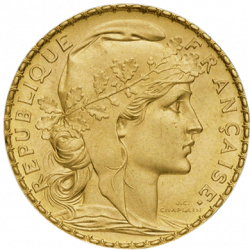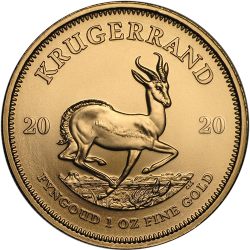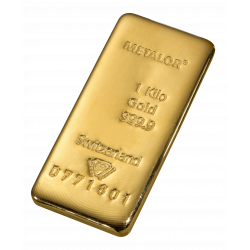Gold price graph
Price per kilo of gold
This graph shows the value (in €) of a kilo of gold over the last two days.
The price of gold determines at what price you can buy and sell gold bullion or coins. The price is volatile and can change quickly, even though it fluctuates to a lesser degree than other financial investments. Many factors, from economic to political and geopolitical, influence the price. Studying how the price has fluctuated in the past gives a better understanding of the (endogenous and exogenous) factors that influence it and can help point to where it might go. GFI specialists can answer any questions you may have on this topic.
What factors influence the price of gold?
- Market conditions
Gold has always been considered a safe haven compared to traditional financial markets. However, it does not offer a recurring yield like a bond does. Gold is a particular asset – any returns come from a change in its value. During market downturns and even economic crises, gold retains its purchasing power to a certain extent. - Inflation expectations
Gold has always been seen as a way to protect oneself from inflation. Indeed, physical gold has an intrinsic value. It can act as a store of value in times of inflation. - Price of the US dollar
The price of gold is generally expressed in US dollars per troy ounce (approx. 31.1g). The higher the value of the dollar, the lower other assets in US dollars, including gold, go. They have a negative correlation. - Real interest rates
Interest rates are the compensation received for certain financial investments (such as a bond). They are directly influenced by inflation. So, it is necessary to look at real interest rates – the yield after deducting expected inflation. When real interest rates increase, gold as an investment becomes less attractive. When these rates fall, investors turn to asset classes that can give a better return, which helps push up the price of gold. - Geopolitical climate
Since gold is considered a safe haven, demand for it, and therefore its price, increases during times of international instability or uncertainty. - Supply and demand
The price of gold changes according to supply and demand. Even though the use of gold in jewellery has fallen recently, the demand for gold by investors and central banks has exploded. - Gold in new sectors
Gold is not only used in jewellery but is increasingly employed in cutting-edge industries. When the demand for gold by industries increases, so too does the price.
A history of the price of gold
Gold in the 20th century
The gold standard and Bretton Woods system
The gold standard was in place at the turn of the 20th century. Essentially, money was based on a fixed quantity of gold. To stabilise their national currencies, central banks had to build up gold reserves. Each currency was pegged to gold.
During the First World War, this monetary system was weakened. And then following the 1929 Wall Street Crash, the gold standard broke down further. In 1944, the Bretton Woods agreement established a gold-exchange standard – only the American dollar was directly indexed to gold and the other currencies were indexed to the dollar. The agreement gave rise to the creation of the International Monetary Fund (IMF), which would supervise the proper functioning of the system.
Oil shocks in the 1970s
In 1971, the gold-exchange standard and the convertibility of gold into US dollars was suspended due to inflation and imbalances in international economic relations. The price of gold was now decoupled from the monetary system and shot up during the 1970s, reaching $850 per troy ounce in 1980. The oil shocks, inflation and geopolitical tensions all played a part in pushing up the price of gold.
Indifference in the 1980s and 1990s
During the subsequent two decades, gold dropped in price and stabilised. It fell again near the start of the new millennium as investors turned toward the new technology companies riding the wave of the Internet bubble.
Gold since 2001
Following 9/11, political tensions around the globe again grew, giving momentum to the price of gold. Gold was more than ever used as a safe haven. The subprime mortgage crisis in 2007 leading to the 2008 financial crisis only reinforced this trend. Between 2012 and 2020, the price of gold consolidated. Despite its fluctuations, the price of gold has risen at pace, quintupling between 2000 and 2020.
As the coronavirus pandemic took hold, investors panicked and turned to gold as markets tumbled. In 2022, all investments have been shaken by the war in Ukraine and the Federal Reserve’s hiking of interest rates to combat galloping inflation. With this complicated backdrop, the price of gold is consolidating but remains at high levels and rests on its position as a safe haven par excellence.
It is time to diversify your portfolio and protect your wealth from the ravages of inflation. Contact the specialists at GFI and benefit from our top-quality services.
Our flagship products



